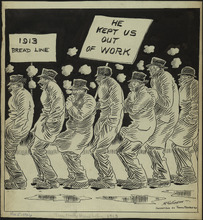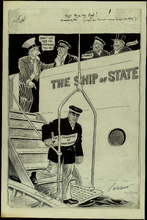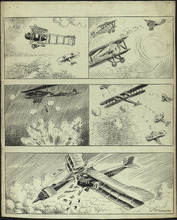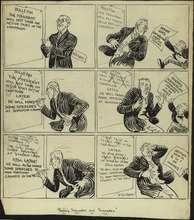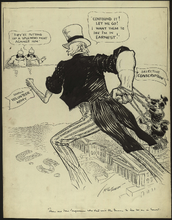JM-165: The great temperance worker
This cartoon shows personified World War I separating countries from their chains to alcohol. The man with the decree on separation is a representation of Russia, who legalized prohibition from 1914 until 1925. The man to his right, holding a separation for absinthe, is a personified France, which banned the manufacture and sale of absinthe in 1914. The man chained to whiskey seeking freedom is representative of Great Britain, who never ratified any serious form of a national alcohol ban. There are many theories as to why these countries (including the United States from 1920-1933) banned the sale or manufacture of alcohol in some way. The cartoon suggests these bans were caused by what many referred to as the "efficiency campaign," which was depicted as the axe used to separate alcohol from these countries. The efficiency campaign suggested these countries were more productive when its citizens (especially laborers) were sober. After banning the sale of alcohol in Russia, the government proudly announced Russia's increased labor output and better economic standing. The heightened need for resources, and diminished labor force from World War I is thought to have inspired the need for higher economic efficiency in European nations. (Summary created by Mary Delano, MU History Intern, Spring 2018)


